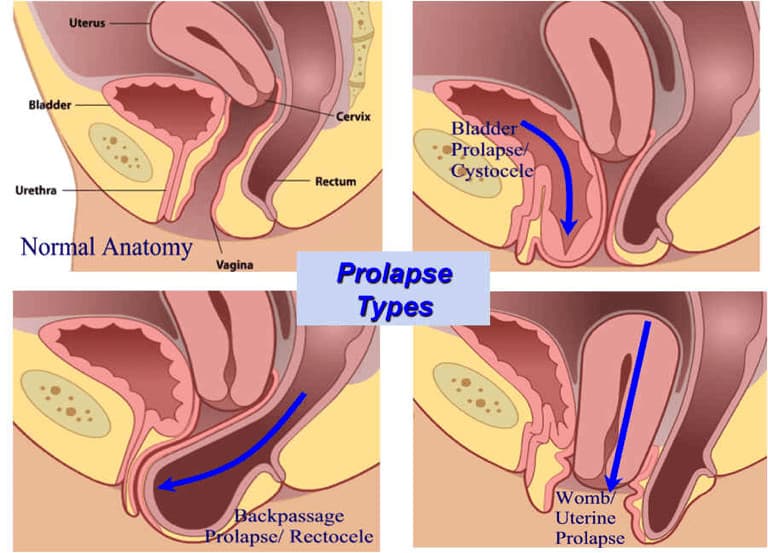Understanding Prolapse After Birth: A Comprehensive Guide for New Parents
Hey there, amazing new parents! If you’ve come across this guide, you’re likely seeking information on something many mums experience but not everyone talks about: prolapse after childbirth. First of all, take a deep breath and pat yourself on the back for diving into this topic. Your health and wellbeing are super important, and it’s great that you’re taking steps to learn more about postpartum health.
What Is Prolapse Anyway?
Prolapse occurs when the tissues and muscles that support the pelvic organs (like the uterus, bladder, and rectum) become weakened or stretched. When this happens, one or more of these organs might sag or bulge into the vagina. It sounds a bit scary, right? But don’t worry, it’s quite common, and there’s a lot you can do to manage and improve this condition.
Why Does Prolapse Happen After Giving Birth?
The process of childbirth can put a strain on your pelvic floor muscles. Vaginal delivery, especially if it involves prolonged labor or a large baby, can contribute to the likelihood of experiencing a prolapse. But fear not! Understanding the causes can empower you to take proactive steps towards healing.
Factors that Increase the Risk of Prolapse:
- Vaginal childbirth: The most common factor, as it stretches and can sometimes damage pelvic support structures.
- Genetics: Some people have naturally weaker connective tissue or a family history of prolapse.
- Obesity: Extra weight can increase pressure on the pelvic floor.
- Respiratory issues: Chronic coughing can strain the pelvic floor.
- Heavy lifting: Regularly lifting heavy objects can also put a strain on pelvic muscles.
Types of Prolapse You Might Encounter
There are a few different types of prolapse, depending on which organ is affected:
- Cystocele: When the bladder protrudes into the front wall of the vagina.
- Rectocele: When the rectum bulges into the back wall of the vagina.
- Uterine prolapse: When the uterus descends towards or into the vagina.
- Enterocele: When the small intestine descends into the lower pelvic cavity and pushes at the top part of the vagina.
Spotting the Symptoms of Prolapse
Now that we know the what and why, let’s look out for the telltale signs that suggest a prolapse:
- A feeling of heaviness or dragging in the pelvic area.
- A bulge at the entrance of the vagina that you can see or feel.
- Discomfort or pain during sex.
- Problems with bladder control or bowel movements.
- Backache or a sense of fullness in your lower back.
If you’re noticing any of these symptoms, it’s essential to discuss them with your healthcare provider. They can help diagnose the problem and suggest appropriate treatment options.
Managing and Treating Prolapse
Dealing with prolapse can feel overwhelming, but there are plenty of ways to manage and treat the condition. Don’t worry, you’ve got this!
The treatment will largely depend on the severity of the prolapse and your personal circumstances, such as whether you want to have more children. Here are some initial steps that may be recommended:
- Pelvic floor exercises: Strengthening the muscles that support your pelvic organs can be a huge help.
- Lifestyle changes: Maintaining a healthy weight and avoiding smoking can reduce pressure on the pelvic floor.
- Pessary: A removable device inserted into the vagina can support the affected organ.
Remember, it can take time for your body to heal after giving birth, and healing is not a race. Be gentle with yourself as you explore these options and find what works best for you and your body.
As you navigate the postpartum period, keep in mind that you’re doing an incredible job. Managing prolapse is just another step in your journey as a parent, and with the right approach and a sprinkle of patience, you can get through this. Stay tuned for more in-depth discussions on specific treatments and tips for living with prolapse after giving birth. Your comfort, health, and happiness matter, and with a little bit of know-how, you’ll be feeling like your fantastic self again in no time!

Five Things Parents Should Know in Preparing for Prolapse After Giving Birth
1. Awareness is Key
Becoming aware of the risk of prolapse is the first step toward prevention and management. Know that prolapse is a possibility after giving birth, and you’re not alone. Many women experience it, although they may not always speak about it openly.
2. Early Intervention Can Make a Difference
Should you notice any symptoms of prolapse, reach out to your healthcare provider without delay. Early intervention can lead to better management of the condition and potentially prevent it from worsening.
3. Pelvic Floor Exercises Are Your Friend
Start pelvic floor exercises as soon as it’s safe to do so after delivery. These can be critical in strengthening the pelvic floor muscles and improving your recovery.
4. Take Care with Your Body
Postpartum, be mindful of the strain you place on your body. Avoid heavy lifting and give yourself time to rest and recover. Keep in mind that taking care of yourself is also taking care of your baby.
5. Plan for the Future
Think about your future plans for more children when considering treatment options. For instance, some surgical treatments may be best postponed if you plan on expanding your family soon.
Embracing the Journey with Confidence
Understanding that prolapse is a common issue that can be addressed with the right knowledge and support helps take the fear out of the equation. Embrace this time with your new baby, and know that with awareness and care, you’re on the right track to recovery. Specialist pelvic health physiotherapists can offer tailored advice and support, which can be invaluable in your journey.
So take your time, lovely parents, and care for your bodies as tenderly as you care for your newborn. With commitment and informed approaches, you will navigate through this postnatal period with grace and confidence. Keep these five essential tips in mind as you prepare for and recover from giving birth. Your well-being is crucial, and by putting your health at the forefront, you’re setting yourself up for a happier and more comfortable postpartum experience.
Taking Action: Steps to Strengthen Your Pelvic Health
Let’s jump into some practical steps you can take to mitigate the risk of prolapse or aid in recovery if you’re experiencing symptoms:
- Regular Check-Ups: Attend all postnatal check-ups and be honest with your healthcare provider about any symptoms or concerns.
- Postpartum Fitness: Gently reintroduce exercise into your routine, focusing on low-impact activities that support pelvic floor recovery.
- Hydration and Nutrition: A well-balanced diet and adequate hydration can ease constipation, reducing the strain on your pelvic floor.
- Posture and Ergonomics: Good posture, especially during breastfeeding, can alleviate unnecessary stress on your pelvic area.
- Support Networks: Build a network of support with other new mothers or find online communities where you can share experiences and advice.
Addressing a topic like prolapse after birth can be sensitive, but it’s also empowering. By staying educated and proactive, you can significantly impact your postpartum health and return to feeling your best. So hi-five to all of you fabulous parents! Tackle this challenge like you do with everything else in parenting—head on and with an abundance of love.
See more great Things to Do with Kids in New Zealand here. For more information see here
Disclaimer
The articles available via our website provide general information only and we strongly urge readers to exercise caution and conduct their own thorough research and fact-checking. The information presented should not be taken as absolute truth, and, to the maximum extent permitted by law, we will not be held liable for any inaccuracies or errors in the content. It is essential for individuals to independently verify and validate the information before making any decisions or taking any actions based on the articles.




